Description
Las máscaras del Carnaval de Oruro, se constituyen en uno de los elementos esenciales de la danza icónica de este carnaval que es el único que se realiza por Fe y devoción a la Virgen de Candelaria, quién es la patrona protectora de Oruro.
Existen varias técnicas para hacer las máscaras del Carnaval de Oruro (Yeso, Latón, Esponja, Fibra de Vidrio, etc.), el yeso constituye el material más tradicional y combina más materiales a su vez. Aquí groso modo de la técnica de elaboración de máscaras del Taller de Máscaras “El Quirquincho”. Cabe apuntar que este arte constituye un legado familiar que se va transmitiendo generación tras generación.
MATERIALES:
- Yeso
- Pinturas
- Focos (bulbos de luz)
- Sombreros (fieltro de _ )
- Espejos
- Cola
- Tela (yute )
- Cartón
- Pinceles, etc.
MOLDES:
Son parecidos a las hormas de zapatos, una parte constituye la nuca y la otra la cara.
FUSTE:
Los fieltros de sombrero, son introducidos en los moldes y recubiertos con yeso, una vez que secan se recortan los contornos y se cose ambas piezas, luego se hace los orificios que harán las veces de ojos y nariz.
PIEZAS ACCESORIAS:
Son el cuerpo del dragón, sus alas, cuernos de la máscara, ojos, orejas, etc.,
Se cortan los cristales para los ojos, dientes y cejas de la máscara.
RASGOS CARACTERÍSTICOS DE LA MÁSCARA:
En el contorno de la nariz existirán terminaciones con muchas puntas que asemejan las llamas del infierno.
Luego del proceso de afinado, se tiene la máscara lista para el pintado.
El combinado de colores parte siempre de los tonos más bajos hacia los más obscuros. Luego se decora con tonos dorados y plateados con un pincel muy fino y largo, también líneas en forma de ondas a manera de venas en las orejas, el pecho del dragón y en las alas.
De esta manera uno queda listo para poder cumplir con el deseo o la promesa de bailar para la Virgen del Socavón el en “El Carnaval de Oruro”.
english
Masks of the Oruro Carnival
The masks of the Carnival of Oruro are one of the essential elements of the iconic dance of this carnival, which is the only one that is performed for faith and devotion to the Virgin of Candelaria, who is the patron saint of Oruro.
There are several techniques to make the masks of the Carnival of Oruro (plaster, brass, sponge, fibreglass, etc.), plaster is the most traditional material and combines more materials at the same time. Here I outline the mask making technique of the “El Quirquincho” Mask Workshop. It should be noted that this art is a family legacy that is passed down from generation to generation.
MATERIALS:
Plaster, paints, spotlights, hats (felt), mirrors, glue, fabric (jute), cardboard and brushes.
MOULDS:
They are similar to shoe lasts, one part forms the back of the neck and the other the face.
FELT:
The hat felts are put into the moulds and covered with plaster. Once they are dry, the contours are cut out and the two pieces are sewn together, then the holes are made to serve as eyes and nose.
ACCESSORY PIECES:
These are the body of the dragon, its wings, horns of the mask, eyes, ears, etc. The crystals are cut for the eyes, teeth and eyebrows of the mask.
CHARACTERISTIC FEATURES OF THE MASK:
On the contour of the nose, there will be many-pointed endings resembling the flames of hell. After the refining process, the mask is ready for painting. The colour combination always starts from the lowest to the darkest shades. The mask is then decorated with gold and silver tones with a very fine and long brush, and also with wavy lines in the form of veins on the ears, the chest and the wings.
In this way, one is ready to fulfil the wish or promise to dance for the Virgin of the Socavón in the “Carnival of Oruro”.

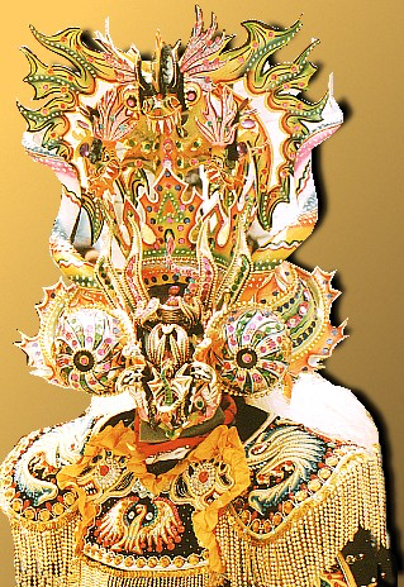
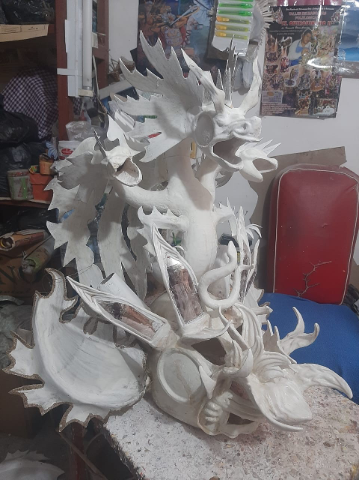
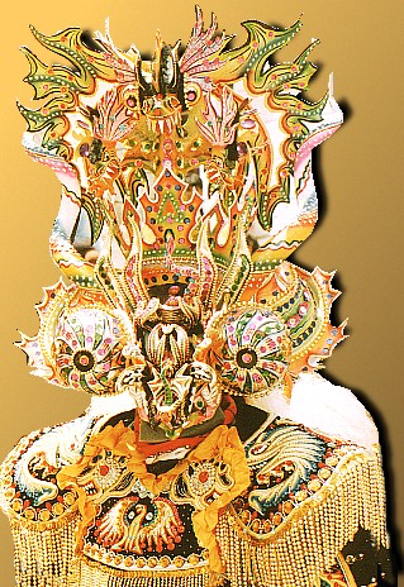
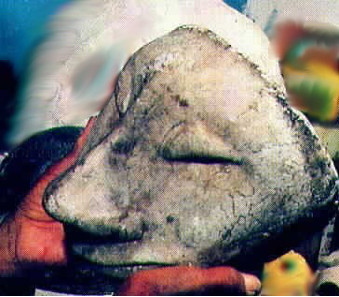
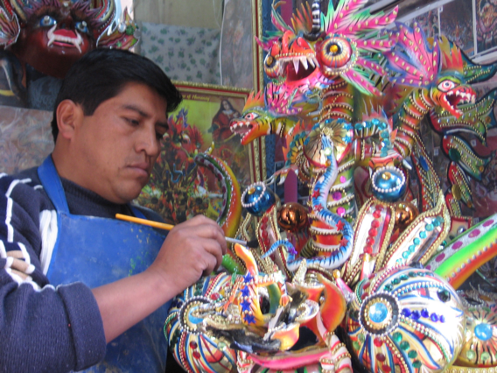
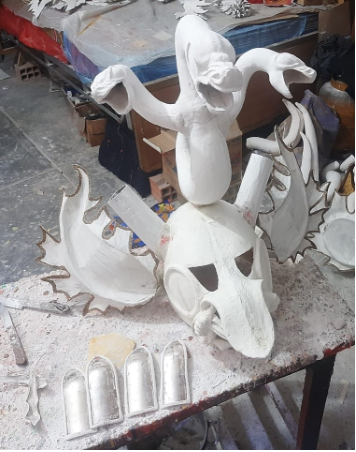
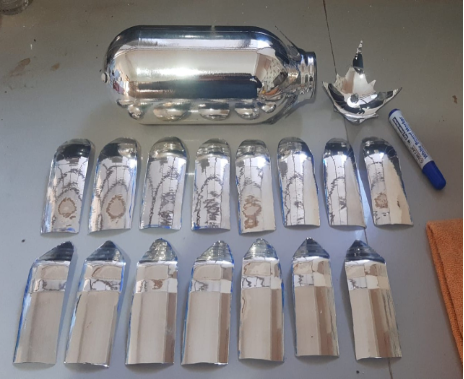
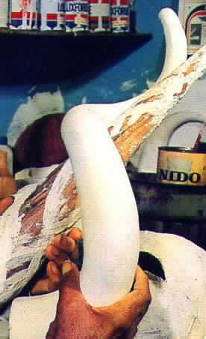
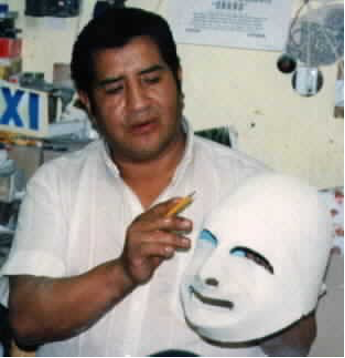
Reviews
There are no reviews yet.